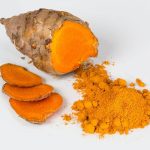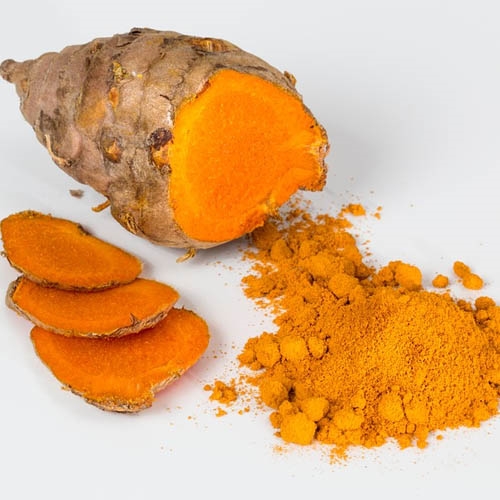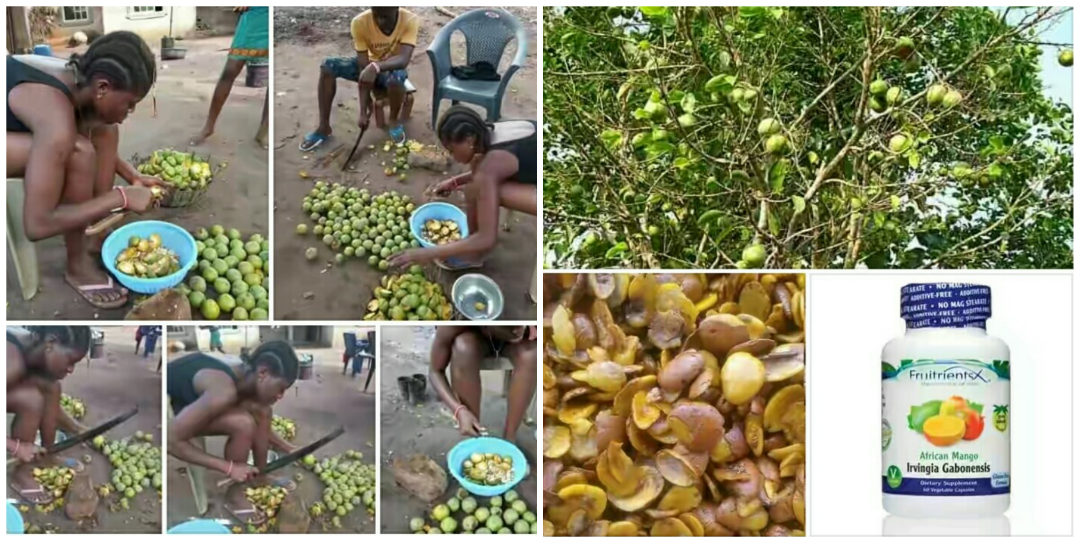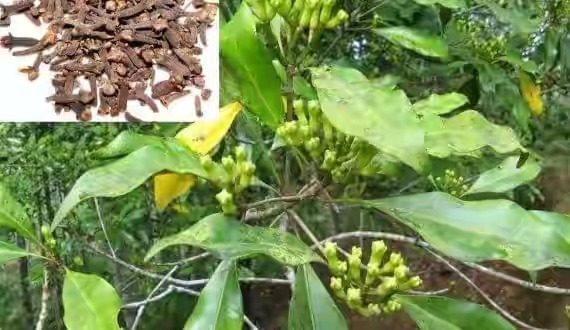Curcuma longa (scientific name) or Turmeric (English) or Gangamau (Hausa) or Atale pupa (Yoruba) or Boboch (Igbo) or Kurkuma, Szafran indyjski (Polish): A spice with many names and health benefits
Turmeric or Curcuma longa is a perennial herb and member of the Zingiberaceae (ginger) family and is cultivated extensively in Asia mostly in India and China. The rhizome, the portion of the plant used medicinally, yields a yellow powder. Dried Curcuma longa is the source of turmeric, the ingredient that gives curry powder its characteristic yellow color. It has many names such as Curcum in the Arab region, Indian saffron, Haridra (Sanskrit, Ayurvedic), Jianghuang (yellow ginger in Chinese), Kyoo or Ukon (Japanese). In Nigeria, it is called Atale pupa in Yoruba; Gangamau in Hausa; boboch in Enugu (Nkanu East); Gigir in Tiv; Magina in Kaduna; Turi in Niger Stat.
Turmeric has been used in Asian cuisines for both its flavor and color and in the Chinese and Ayurvedic medicine particularly as an anti-inflammatory and for the treatment of jaundice, menstrual difficulties, hematuria, hemorrhage, and colic. It is official in the Pharmacopoeia of China as well as in other Asian countries such as Japan and Korea and its usage covers a wide range of health indications. In China it is ingested orally and applied topically for urticaria and skin allergy, viral hepatitis, inflammatory conditions of joints, sore throat and wounds. Oral administration is the main route of administration for Curcuma longa, it can also be used topically and via inhalation (Ayurvedic tradition) or can be applied topically for the treatment of acne, wounds, boils, bruises, blistering, ulcers, eczema, insect bites, parasitic infections, hemorrhages and skin diseases like herpes zoster and pemphigus.
Turmeric possesses anti-inflammatory activities; in fact, oral administration of curcumin (the active substance in Turmeric) in instances of acute inflammation was found to be as effective as cortisone or phenylbutazone, which are pharmaceutical agents used to fight inflammation. Turmeric has powerful antioxidant activities; water and fat-soluble extracts of turmeric and its curcumin component exhibit strong antioxidant activity, comparable to vitamins C and E. Turmeric has been shown to have a hepatoprotective (protection of the liver) characteristic similar to silymarin.
Studies have demonstrated turmeric’s hepatoprotective properties from a variety of hepatotoxic injuries, caused by dangerous substances, including carbon tetrachloride (CCl4), galactosamine and acetaminophen (paracetamol). Curcuma longa has been demonstrated scientifically to protect the body against cancer at all the stages of cancer development (initiation, promotion and progression).
The anti-cancer activities of turmeric and curcumin are due to their direct antioxidant and free-radical eliminating properties as well as their ability to indirectly increase glutathione (a powerful antioxidant) levels, thereby assisting in hepatic detoxification (removal) of mutagens (substances that cause damage to the genetic material DNA) and carcinogens (cancer-forming substances), and inhibiting nitrosamine formation and Curcumin also induces apoptosis (programmed cell death) of cancer cells and it inhibits angiogenesis (formation of new blood cells, which are used to feed cancer cells).

Credit: Growers Exchange
Some, but not all scientific studies have shown the benefits of Turmeric in the prevention and treatment of diabetes mellitus. Turmeric possesses also anti-microbial activities; turmeric extract and the essential oil of Curcuma longa have been shown in scientific studies to inhibit (stop) the growth of a variety of bacteria (including bacteria, which cause gastric ulcer, parasites, and pathogenic fungi. Curcuma longa can be helpful in decreasing the risk of the abnormalities of the cardiovascular system (diseases of the heart and blood vessel diseases).
Turmeric’s protective properties on the cardiovascular system include lowering total cholesterol and triglyceride levels, decreasing susceptibility of low density lipoprotein (LDL = bad cholesterol) to lipid peroxidation (damage by free radicals) and inhibiting platelet aggregation. Turmeric has been shown to be helpful in respiratory problems; In India, the fresh juice of Curcuma longa is given in bronchitis.
In rhinitis and cough, boiled Turmeric in milk and mixed with jiggery is administered internally. In catarrhal cough, sore throat, and throat infection the decoction of Curcuma longa is used for gargle and also the piece of the rhizome is slightly burnt and given for chewing.
These are the thoughts of:
Sa’eed Halilu Bawa
Senior Lecturer (Associate Professor) at University of the West Indies, St. Augustine Campus, Trinidad.
Studied Food and Nutrition Sciences, Dietetics at Kaduna Polytechnic, Nigeria; Warsaw University of Life Sciences, Poland.
























